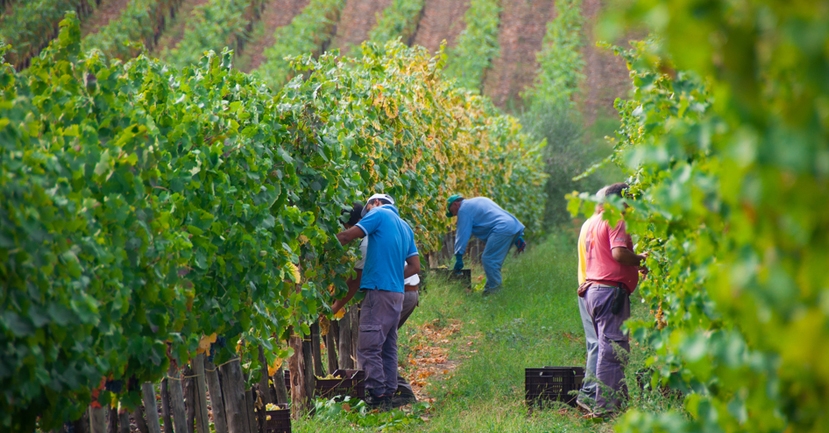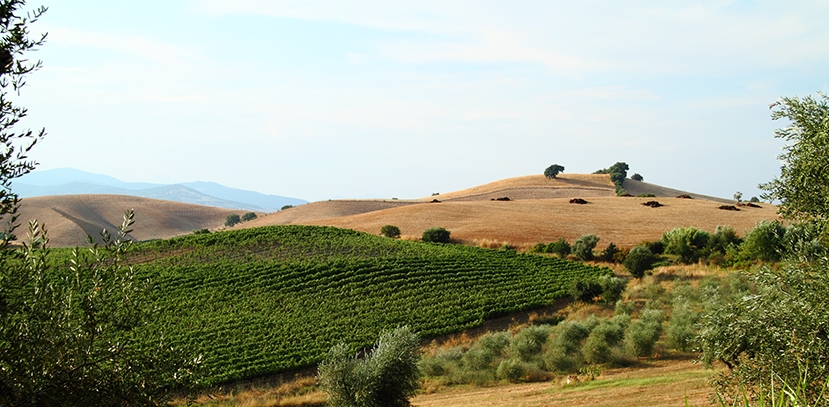BLOG
The Heights of Wine: Discovering Savoie’s Alpine Offerings
Christopher Howard
Regional Spotlight

Despite its location in the French Alps, Savoie has long been overshadowed by its more famous neighbors. Yet with its distinct grape varieties, alpine terroir and rich viticultural heritage, this niche French region—bordering Switzerland and Italy—offers a taste of all that makes wine captivating.
As Savoie’s wines increasingly reach beyond local ski resorts and some (like Jancis Robinson) touting it as ‘the next Jura,’ this small force majeure of a region deserves to be on your list. Let’s take a quick spin through the diverse terroir and grapes that define Savoie.
Terroir Like No Other
Just as every human shares the same fundamental building blocks yet becomes unique through the interplay of genes and environment, every terroir reveals its singularity through the distinct combination of soil, climate and geography. Savoie's vineyards, covering just 2,050 hectares (a mere 0.27% of France's total vineyard area), are scattered across glacial valleys, steep slopes and foothills at elevations ranging from 200 to 600 meters. While not the high-altitude region often assumed, Savoie's terroir is nonetheless profoundly shaped by the French Alps and, to a lesser extent, the Jura range.
The region's mineral-rich soils are a geological mosaic, born from tectonic collisions that thrust limestone bedrock skyward during the Alps' formation. Over millennia, this bedrock and other rocks tumbled downward, creating the fertile slopes and valleys ideal for viticulture. Eroded limestone scree, remnants of ancient glaciers and river stones form a diverse patchwork of soils—including marl, quartz, molasse and schist. This complexity, combined with varying microclimates, gives rise to the Savoie appellation's (AOP) 20 geographic denominations and its three PDOs: Savoie, Roussette de Savoie and Seyssel.
Above ground, fresh alpine air, abundant water and plentiful sunlight create exceptional growing conditions. Dramatic diurnal shifts—warm days and cool nights—preserve the grapes’ vibrant acidity and aromatic precision. South-facing slopes bask in summer sun, while nearby lakes such as Lac d’Annecy, Lac du Bourget and Lac Léman (Geneva) moderate the climate, imparting freshness and crystalline purity to the wines—predominantly whites, which constitute 70% of Savoie's production. The Rhône River, flowing from Switzerland through the region, hints at genetic links between Savoie’s indigenous grapes and the noble varieties of the Rhône Valley.

The vines share this idyllic landscape with olive, almond and apricot orchards, evoking the feel of a vast mountain garden. This fusion of alpine terrain and Mediterranean influences has earned Savoie the nickname 'Riviera of the Alps.' With over 2,000 years of winemaking history, Savoie is home to indigenous grape varieties found nowhere else, making its wines as unique as the region itself. Terroir, after all, is shaped not only by nature but also by culture.
Building on two millennia of viticultural history, many Savoyard winegrowers have embraced organic and biodynamic practices—a natural fit for such a pristine environment. Small, family-run vineyards cling to steep slopes where mechanisation is nearly impossible, requiring a hands-on approach that reflects the region's dedication to tradition and sustainability. The result is a compelling range of wines that reflect Savoie's alpine character but also speak to the evolving palates and ethical sensibilities of contemporary wine lovers.

The Grapes and Crus That Define Savoie
Savoie's wines are as diverse as its landscapes, with over 22 grape varieties cultivated—many found nowhere else. In addition to its unique indigenous varieties, we find more familiar grapes such as Pinot Noir, Gamay and Chardonnay that take on a Savoie accent.
Leading Savoie's white wine production is Jacquère, accounting for 40% of vineyard plantings. This variety produces crisp, mineral-driven wines with delicate floral and citrus notes, thriving on the limestone slopes of Apremont and Abymes. Perhaps the region's most noble white grape, Altesse (also known as Roussette) shows remarkable aging potential, offering layers of stone fruit, honey and alpine herbs, all driven by fresh acidity. It reaches its peak expression in appellations such as Frangy, Marestel and Monterminod.
Two of Savoie's most distinctive white varieties showcase the region's diversity. Gringet, grown almost exclusively in the remote northern cru of Ayze, produces richly textured, floral whites with refined alpine freshness, expressed in both still and méthode traditionnelle sparkling wines. Meanwhile, Bergeron (the local name for Roussanne) thrives on the sunny slopes of the Chignin cru, yielding rich, aromatic whites with hints of apricot and almond—displaying a notably fresher profile than its Rhône Valley counterparts.

Among Savoie's red varieties, two indigenous grapes stand out. Mondeuse, deeply rooted in Savoie, produces peppery, dark-fruited wines reminiscent of its close relative, Syrah, showing particular expressiveness in the Arbin and Saint-Jean-de-la-Porte crus. It also comes in white—Mondeuse Blanche—a soft, floral grape that shines both in blends and as a varietal wine. Persan, another indigenous red, offers deeply colored, densely structured wines with serious aging potential. After nearly disappearing, this variety is experiencing a welcome renaissance, with plantings on the rise.
In addition to still wines, Crémant de Savoie has been gaining ground since receiving AOC status in 2014. Made using méthode traditionnelle, it requires a minimum of 60% Jacquère, with Altesse and Aligoté also permitted, while Chardonnay is limited to 20% to ensure the sparkling wines maintain Savoie's distinctive alpine character rather than mimicking Champagne.
Let the Games Begin
Despite its rising acclaim, unlike nearby Jura and Burgundy, Savoie wines remain remarkably affordable. Along with price, they tend to be naturally low in alcohol (often 11-12%), an appealing trait in today's age of moderation and climate induced heat spikes. Savoie's whites are a natural complement to the region's signature cheeses—Beaufort, Reblochon and Tomme de Savoie—and hearty alpine dishes like fondue, tartiflette and lake fish. Yet, their crisp acidity and minerally character offers delightful versatility, pairing beautifully with everything from creamy dishes to seafood and Japanese cuisine. Meanwhile, the peppery, earthy profiles of Mondeuse and Persan are ideal for game meats and charcuterie, yet they can also hold their own against the bold flavors of Indian curries or Korean barbeque.

Beyond gastronomy, Savoie's wines complement the region's spectacular outdoor and cultural offerings: world-class skiing, hiking, pristine lakes, medieval towns and picturesque mountain villages. Old-school, family-run domaines warmly welcome visitors with low or no tasting fees and extremely well-priced bottles (pack accordingly). Still today, only a fraction of Savoie's wine makes it out of the Alps, making another good reason to visit. The astute WSG wine student/ lover/professional may note that the 2030 Winter Olympics will be held here. The last time the French Alps hosted the Games in 1992, Savoie wines experienced a surge in attention, quality and demand. With growing global recognition and another Olympic spotlight on the horizon—the future looks bright for this alpine wine region.
Further reading: Wink Lorch’s award-winning Wines of the French Alps (2019) is the definitive book on Savoie in any language.



